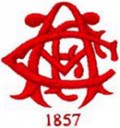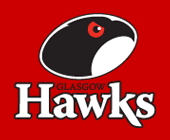|
Between 1866 and 1873 Glasgow Accies played Edinburgh Accies on 5 occasions--20 aside matches
Based on the scoring system of the time the record shows
Played-5
Goals for 3
Goals against-0
Touchdowns for-8
Touchdowns against-0
Matches won-3
Draws in favour-0
Draws-3
Draws against-0
Lost-0
This was compiled by J.W Arthur who was one of the signatories to the Challenge letter sent to the clubs of England to meet the clubs of Scotland under the "rugby"rules which gave birth to the international game
SCOTLAND ON SUNDAY REPORTS
Pioneers celebrate historic milestone
Edinburgh Accies have supplied 96 Scotland caps in 150 years
By Richard Bath
EDINBURGH Academicals are 150 this weekend. To celebrate their Accies first team will be playing the Scottish Co-optimists at Raeburn Place on Saturday in a match which the scratch side's coach Ian Rankin will be using as a trial for the forthcoming club internationals. In April, Accies will face the Barbarians.
If ever there was a milestone in Scottish sport worth celebrating it is this one, because no other club in the world has had a more significant impact on rugby than the Raeburn Place outfit. It has become so commonplace to think of Scottish rugby as the poor relation of the world game that it is sometimes difficult to comprehend the unparalleled list of firsts that Scotland's oldest club boasts.
There's the obvious one that it was at Edinburgh Accies' current ground in Stockbridge, back in 1871, that the first game of international rugby was held, in which Scotland beat England by a try and a goal to a try in front of a crowd of over 4,000 spectators.
There were six Accies players in that side, including the skipper, the Hon Francis Moncreiff, and two legends of the early game in Robert "Bulldog" Irvine and James Finlay. Since that day another 90 have gone on to wear the Scotland colours (and five for England).
In all, Accies claim that 96 Scotland players have come from the club, making it the most prolific supplier of Scotland caps of any club north of the Border (only London Scottish have supplied more). Just over 1,000 players have now been capped for Scotland, and of those almost one in 10 were serving or former Accies, including some of the most illustrious names in every era of the game. The same goes for the supply of British and Irish Lions: 13 current or former Accies have worn the famous red jersey, and in Mike Blair there's every chance that yet another Academical will represent the club on the 2009 Lions tour to South Africa.
The Accies were formed in 1857 and is the second oldest club in the world after Trinity College in Dublin, but to fully understand the place of Accies in the world it is important to take a quick look at the history of the game at Edinburgh Academy itself, because the two are inextricably intertwined, certainly until 1973 when the club was still open only to former pupils of the Academy.
Rugby arrived in Scotland via Edinburgh Academy in 1854 when two brothers, Francis and Alexander Crombie, moved to the city from Durham. Neither had played but both knew the rules, and when Francis was enrolled at the Academy, he passed on the knowledge and the game quickly took hold. Alexander, although too old to attend the Academy, helped set up the Edinburgh Academical Football Club and from 1858-64 he was the club's first captain.
The school is famous for playing the oldest continuous fixture against another side, its annual match against Merchiston Castle having first been played in 1858, but the earliest match ever played between two sides was between the Accies club and Edinburgh University in 1857.
That match is to be commemorated at 1pm at Raeburn Place this Hogmanay, when two teams of 25-a-side will play wearing the original kit and according to the original 1857 laws (codified at Edinburgh Academy in the so-called 'Little Green Book'). It is unlikely that the match will last as long as the original, however: the match was played over four Saturdays, starting on Boxing Day 1857 and only concluding on January 16 1858, when they increased the size of the teams to 30 and agreed not to leave until one team had scored the requisite four dropped goals for the win, Accies eventually prevailing.
Three schoolboys were capped while still at Edinburgh Academy, and two of them ended up playing against each other at Raeburn Place in 1881. Charles "Hippo" Reid, a huge and aggressive forward, was only 17 years and 36 days old when he made his debut against Ireland in 1881. Later that season he played against classmate Frank Wright, who made his debut against Reid in the white of England after Henry Taylor of Blackheath missed the train to Edinburgh. The third Academy boy to play for Scotland was Ninian Finlay, the youngest player ever to play for Scotland (he was 17 and 36 days when he made his debut in 1875, but had lived through one less leap year than Reid) and one of three brothers to win Scotland caps.
It is difficult to overstate the degree to which Edinburgh Academy and its FP side powered the development of the early game in Scotland.
There are seven rugby players in the Scottish Sport Hall of Fame, and two are Accies players: GPS MacPherson, the centre who skippered the 1925 Grand Slam side and is rated Scotland's best ever player by knowledgeable judges, and barnstorming 1950s flanker Doug Elliot. With players like centre Harry Stevenson, dubbed "the greatest footballer in the world", first Lions captain Bill MacLagan and Scotland's greatest-ever all-rounder Leslie Balfour, the Accies were very strong in the game's early years. But a host of Accies have been strong players for Scotland into the modern era, men like Rodger Arneil, Doug Elliot, John Allan, David Sole, Scott Murray, Rob Wainwright, Donnie Macfadyean and Mike Blair have not just been good Scotland players, they've been great ones.
The fortunes of the club may have waxed and waned, with the apogee being named unofficial Scottish champions in 1958 and the low the recent drop down the divisions, but the club has maintained the highest playing numbers in the country and still puts out five or six teams each weekend. That strength in depth and the vibrant rugby scene at the Academy itself has enabled the club to recover, and under the pragmatic tutelage of former Hawick and Scotland second row Ian Barnes, it is now back in the top flight, where it belongs.
TRAILBLAZERS
Founded in 1857-58, Edinburgh Academical Football Club is the oldest rugby club in Scotland and the second oldest in the world, behind Trinity College, Dublin.
The club's name omits the word 'rugby' because it pre-dates the division between the Association and Rugby codes of football which took place in the 1863.
The club's home, Raeburn Place, staged the first ever rugby international, between Scotland and England in 1871.
Edinburgh Accies have supplied more players to the national team (96), than any other club based in Scotland.
Accies have supplied two out of three of Scotland's Grand Slam captains. GPS MacPherson was skipper in 1925 and his feat was emulated by David Sole in 1990.
Accies joined the RFU in 1872 before resigning in 1873 to become one of the eight founder members of the organisation that later became the SRU.
This article was originally posted on 23-Dec-2007, 14:59 by Hugh Barrow.
Last updated by Hugh Barrow on 23-Dec-2007, 15:53.
|



Scotland v England Raeburn Place 1871

|









